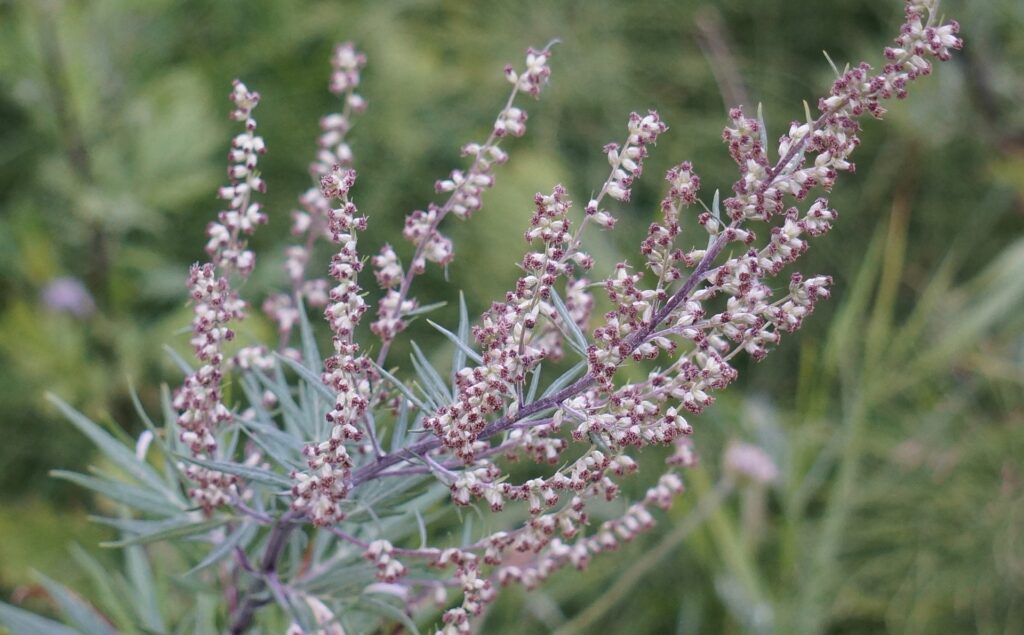The Chinese character for acupuncture actually translates to “acupuncture-moxibustion”. You would not be alone in wondering what exactly is moxibustion? Perhaps you have come into the clinic on a certain day and smelt a very peculiar scent of ‘something funky’ being burned- that’s moxa’s unique scent! So, what is moxibustion and why is your acupuncturist burning it?
Moxa has been used for thousands of years in the East and is an inseparable piece of Chinese medicine. You may recognize it by some of its common names; Mugwort, Artemisia, or Japanese Wormwood. In China it is called AiYe, and is in the same family as the common daisy. Many years ago, it was introduced to the United States from Europe and is now on the invasive species list. It is an aromatic, tall growing, leafy perennial which gets unimpressive purple to white flowers. It is easy to grow in sandy open ground and meadows. Many have it planted in their gardens.
In the clinic, you’ll most often see it used compressed into a dried stick of mulched herb (much like a large incense stick). It is then burned over specific acupuncture points and meridians. The herb may be applied directly to the skin in the form of a small cone or it may be waved over the desired area. This typically goes on for about 10-15 minutes during an acupuncture session. It has a woody incense-like aroma when burned. Most describe it as warming and soothing.
Chinese medicine has a particular way of describing an herb’s properties. An herb fits into a specific category, goes to a specific organ or area of the body, has a specific flavor, and has a unique temperature. All these factors help your herbalist to find what herbs will balance a client’s specific constitution. Moxibustion is used only for specific signs and symptoms.
AiYe has blood regulating and warming properties. When it is burned over specific areas it infuses the region with its moving and warming properties, dispersing any cold or stagnant Qi. That means it is great for any conditions or pains that involve cold sensations or are worse in the cold or damp weather, such as neck and back pain, neuropathy, digestive discomfort, fatigue, menstrual pains, joint pains, etc. When burned, it helps to add Energy into a “deficient” constitution. Acupuncture by nature is good at moving Energy, not building it. This is why moxa is commonly used alongside acupuncture.
There is a good deal of research on moxibustion. One more thoroughly studied utilization of moxibustion is on turning a breech baby. Typically, this is done in week 32-36 of pregnancy. In one study of 505 women with breech presentation, 81% of the woman’s babies turned in the moxa group compared to only 49% in the control group. Moxa was done during weeks 28-34 of pregnancy for seven days (20 minutes of moxa twice daily).
Moxibustion is an integral part of Traditional Chinese Medicine. It has been used for centuries in many forms as internal or external medicine. The next time you are feeling cold and stagnant, remember the warmth of moxibustion!
(written by Ashley)
